Yeezy shoes by Kanye West are some of the most coveted and expensive sneakers on the market. So when ads promoting Yeezy shoes at clearance sale prices up to 90% off start popping up on social media and online, it can be tempting to jump at what looks like an incredible deal. However, buyers should beware – these rock-bottom prices are a front for elaborate scams designed to trick shoppers out of their money.
This article will break down exactly how the Yeezy clearance sale scam works, provide tips on how to spot a fake Yeezy website, and give advice for consumers who may have fallen victim to one of these schemes.
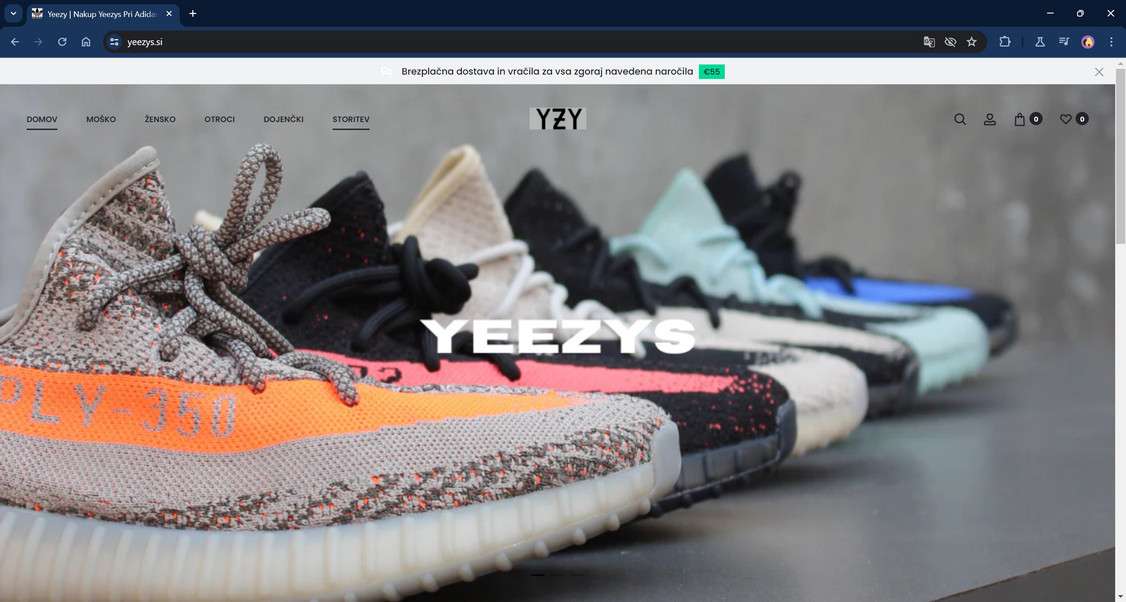
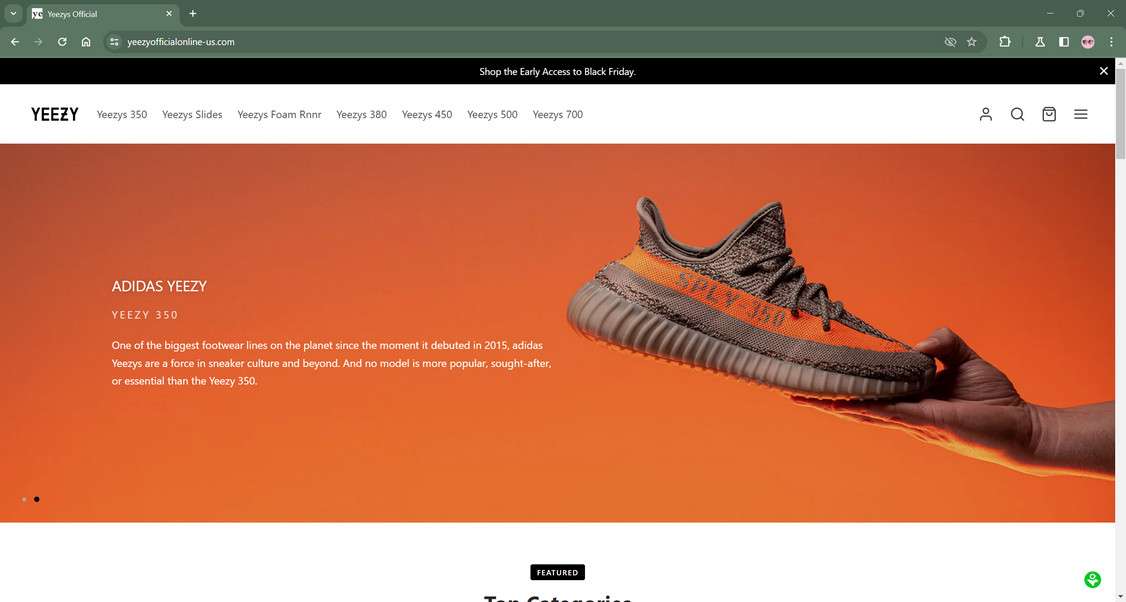
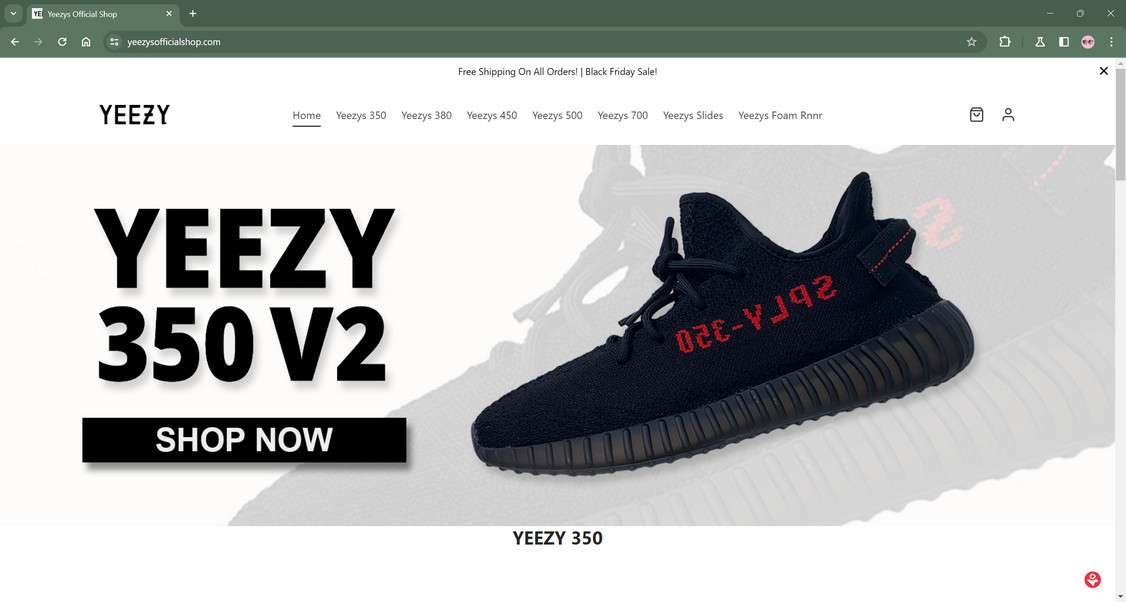
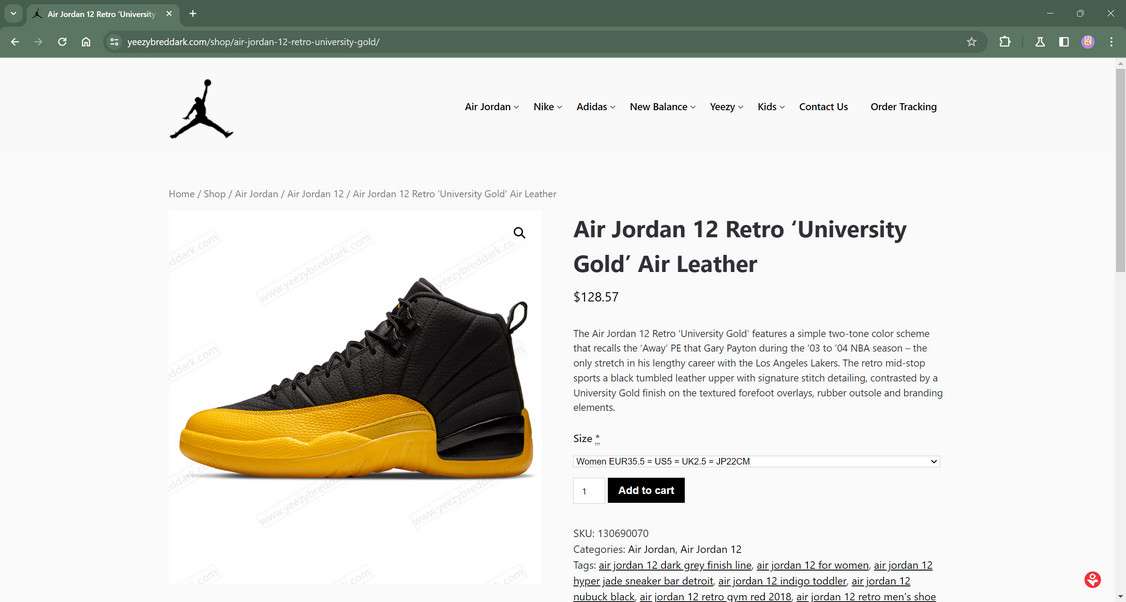
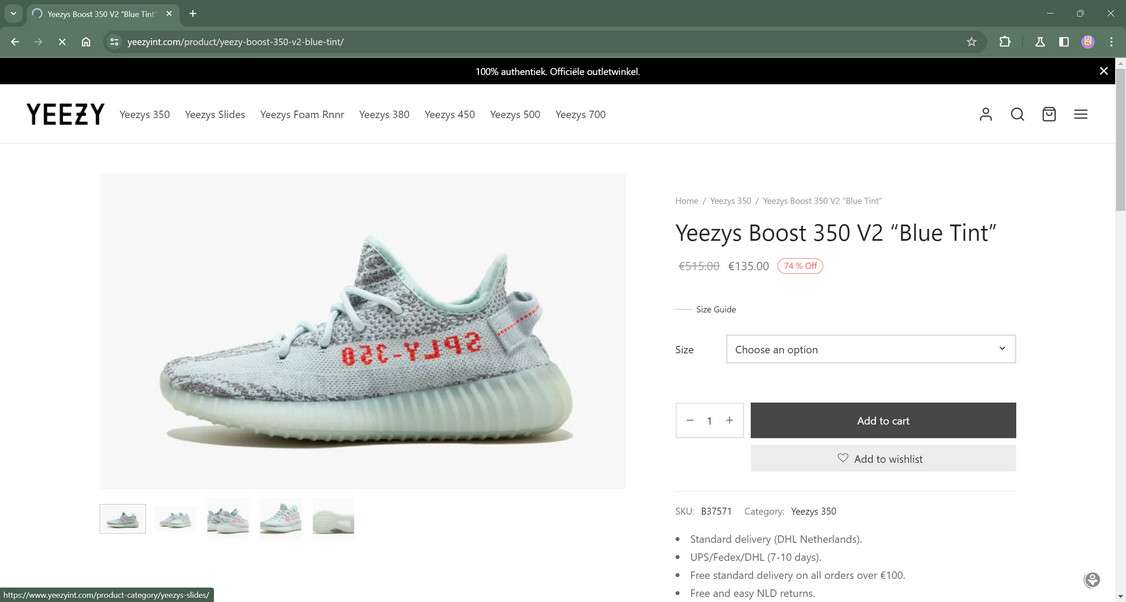
This Article Contains:
Overview of the Yeezy 90% Off Clearance Sale Scam
The Yeezy clearance sale scam is an increasingly prevalent online shopping fraud exploiting hype around Kanye West’s popular sneaker brand. Scammers create elaborate fake e-commerce websites falsely advertising Yeezy shoes priced at clearance discounts up to 90% off retail value. Through paid social media advertising, they target and lure young hypebeast demographics into purchasing from the fraudulent sites.
However, customers ultimately receive no shoes or low-quality counterfeits rather than the advertised products. The websites provide no legitimate customer service and victims are left with no recourse to recover lost money. Awareness of how this bait-and-switch scam operates can help shoppers avoid being duped by the deceptive sales events.
Yeezy shoes consistently rank among the most coveted sneaker releases year after year. Models like the Yeezy Boost 350, Yeezy Boost 700, Yeezy Foam Runners, and Yeezy Slides routinely incite frenzy on release dates and resell for well above retail pricing. For example, the Adidas Yeezy Boost 350 V2 ‘Zebra’ originally retailed for $220 but currently resells for over $375 on average.
Such huge profit potential makes Yeezy sneakers prime targets for counterfeiting. Fake Yeezys plague secondary resale markets, trying to pass off unauthentic shoes to buyers seeking prestige and clout. Scammers spotted an opportunity based on Yeezy’s brand hype.
By mimicking official online stores and advertising clearance prices up to 90% off, scammers stir up extreme excitement and lower skepticism. Rather than try selling obvious knockoffs, they bait unknowing victims who believe they are receiving massive discounts on real Yeezys. The strategy banks on human psychology, exploiting the fear of missing out on limited availability at prices way under market value.
Social proof factors in too. Seeing ads boasting unbelievable Yeezy deals with thousands of likes and comments makes the scam look credible. Set against a backdrop of constant hype and status-seeking surrounding Yeezy drops, few pause to question the legitimacy or logic behind prices like $29 for shoes resale anywhere from $200 to $500+.
In the moment, the chance at previously unobtainable hype shoes for 90% off MSRP clouds critical thinking. Victims eagerly provide payment info without wondering why a retailer would sell finite Yeezy stock at such absurd losses. Scammers cash out big simply by triggering irrationality in shoppers obsessed with securing coveted sneakers.
The scam persists largely unchecked because Yeezy shoes remain perpetually difficult to score for retail price. Adidas employs careful artificial scarcity tactics keeping even general releases in short supply. Huge demand chasing limited stock allows high resale values. Scammers run rampant trying to cash in on desperate hypebeasts through fakes.
Limited pairs also make the clearance sale scam more believable. Victims figure warehouses are just trying to unload leftover Yeezy inventory in bulk while they can. In reality, scammers never possess any authentic shoes in the first place. Still, perceptions of exclusivity give the scam a mask of credibility that many customers fail to see past.
How the Yeezy Clearance Sale Scam Works
Scammers running the Yeezy clearance sale scam follow deliberate strategies to successfully trick their victims. Here is an inside look at exactly how they build their fake sites, market to customers, and carry out the con:
Step 1. Creating Deceptive E-Commerce Websites
The scammers begin by registering domain names that sound like they could be affiliated with Kanye West’s brand. Examples include domains like “YeezySupplyClearance,” “YeezyStoreOutlet,” or “YeezyZoom.”
They design the sites to closely mimic the aesthetics of real Yeezy online stores using the brand’s iconic fonts, logos, and imagery. The website templates display sections like “About Us,” “Shipping,” and “Return Policy,” along with polished navigation menus and shopping cart experiences.
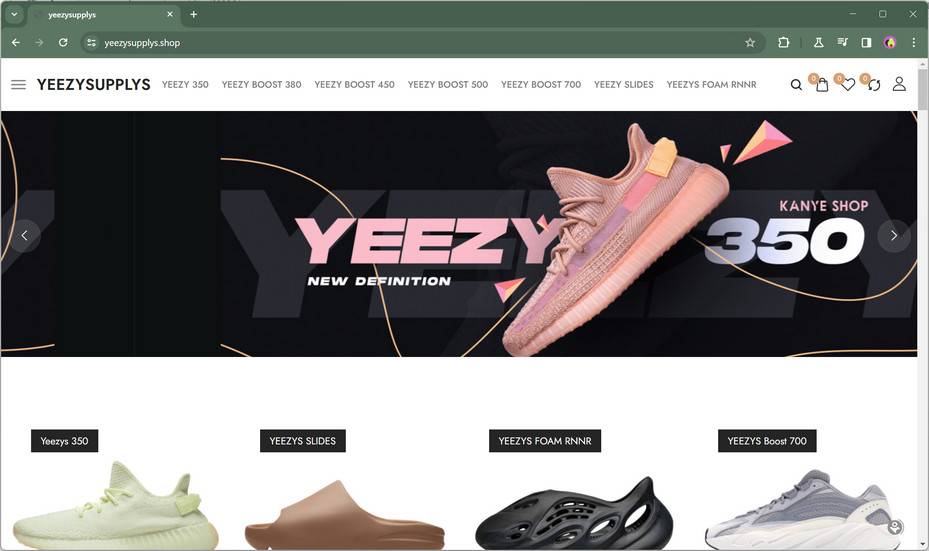

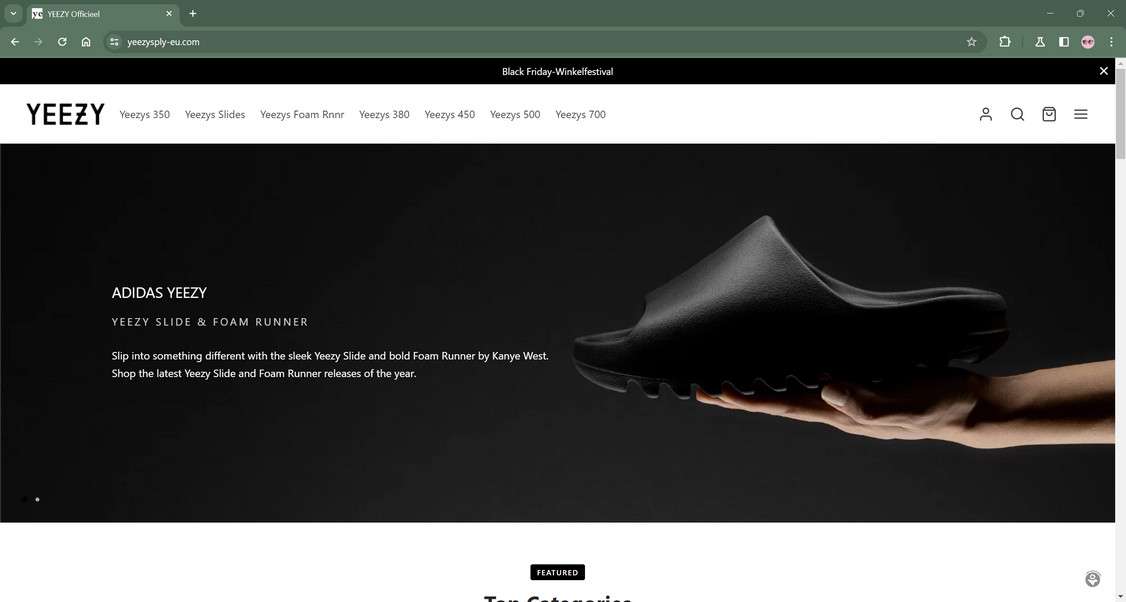
To avoid scrutiny, the scammers list fraudulent physical addresses or just omit contact information entirely. The sites also lack any kind of real social media presence that connects them to Yeezy.
Once the fake storefronts are online, the scammers steal product photos and descriptions from legitimate Yeezy retail sites to populate their clearance sections. They add countdown timers to evoke urgency and get customers to buy before time runs out.
Step 2. Promoting Scam Websites on Social Media
Scammers rely heavily on paid social media ads to promote their fake Yeezy web stores. The ads tout clearance discounts up to 90% off across Instagram, Facebook, TikTok, and use other popular platforms.
They target users who are likely Yeezy customers based on interests like hip hop, sneakers, Kanye West, streetwear fashion, and more. Youthful demographics like teens, college students, and young adults in their 20s are also primed targets.
The ads feature images of popular Yeezy models like the Yeezy Boost 350, Yeezy Boost 700, and Yeezy Slides — often using the very same stolen photos seen on the scam websites. Headlines entice shoppers with messages like “Going out of business sale!” and “Last chance for 90% off Yeezys.”
When users click the ads, they get funneled straight to the fake clearance sale sites ready to make purchases. The scam lands unsuspecting victims who just wanted a great deal on coveted shoes.
Step 3. Executing the Bait-and-Switch Scam
Once orders start flowing in, scammers carry out a classic bait-and-switch operation. The websites promise shoppers they will receive heavily discounted pairs of authentic Yeezy shoes.
Instead, victims either get nothing at all, cheap counterfeit Yeezys, or a random low-cost item like bracelets or sunglasses. Some reported receiving shoes from brands like Crocs or Skechers — clearly not what they paid for.
Most customers cannot even get responses from the fake customer service email addresses listed on the sites. Any listed phone numbers simply disconnect. There is essentially zero recourse once scammed by the fake Yeezy web stores.
The bait-and-switch allows scammers to profit handsomely on the hype for Yeezys while providing none of the actual value in return. For just the cost of building basic websites and running ads, they walk away with 100% profit margins and no repercussions.
The Yeezy clearance scam takes advantage of blind spots in consumer behavior. The promise of 90% off expensive sneakers is enough to entice victims into ignoring signs of fraud all around the shady websites. Now let’s examine how to detect some telltale red flags.
How to Spot Fake Yeezy Websites
Spotting scam Yeezy sites comes down to watching for some key characteristics commonly used in their schemes. Here are the top signs that a Yeezy web store offering clearance prices is a total fake:
- No Verifiable Contact Information – Real brands want to be reachable to their customers. Scam sites tend to omit working phone numbers, physical addresses, and customer service channels beyond an email.
- No Connection to Yeezy’s Social Accounts – Authentic Yeezy retailers promote their collaboration with Kanye West’s brand on social media. Scam websites have zero social presence linking them to Yeezy.
- Domain Name Has No Association to Yeezy – The website URL contains terms hinting it’s an unauthorized clearance sale like “YeezySupplyOutlet” or “YeezyWholesale.”
- Prices Too Good to Be True – When you see Yeezy shoes marked down 70%, 80%, or 90%, it’s a total scam. Those prices are unrealistic even for clearance sales.
- Lack of Basic Company Info – No legitimate “About Us” pages with company background, history, leadership, or customer reviews.
- Shady Payment Methods – Avoid sites that push odd payment channels like Zelle, direct bank transfers, gift cards, etc. instead of standard options like PayPal or credit cards.
- Countdown Timer Pressure – Urgency tactics like ticking timers try to speed up your purchase before you spot scam clues. Don’t fall for it.
- Text Sounds Computer-Generated – Scam sites have telltale signs of AI-written product blurbs, ABOUT US, and policies. Human-written text has a very different tone.
- Poor Writing Quality – Sloppy grammar, typos, sentence fragments, and other shoddy writing reveal scam artists trying to quickly make sites.
If a website selling cut-rate Yeezys trips any of these red flags, steer clear! Only purchase from authorized retailers you trust or sites like StockX and GOAT with authentication guarantees. Otherwise, you risk getting scammed out of your money with no chance for recourse.
How to Spot the Fake Yeezy Clearance Sale Scams on Social Media
How to Spot Yeezy Clearance Sale Scams on Facebook
Facebook’s massive user base and ad targeting makes it a prime platform for Yeezy clearance scam ads. Here’s what to watch for:
- Ads with graphics screaming “90% Off Yeezys,” “Store Closing Sale,” or “Limited Time Clearance” trying to create false urgency
- Video ads displaying what look like unauthorized behind-the-scenes Yeezy photoshoots to appear official
- Comment sections may be disabled to prevent real users from exposing the scam
- Clickable links lead to fake Yeezy web stores instead of the real yeezysupply.com domain
- Promoters frequently change their Facebook Page names and profile photos to stay anonymous
- Pages lack any verifiable contact info, company history, location mentions, or reviews
- No evidence on the Facebook Page that they are an authorized Yeezy retailer
- Child Pages under the scam Page contain no real content, followers, or posts
Stay far away from any Facebook ads pushing clearance Yeezy discounts near or above 90% off. Only the real @YeezyMafia page is authorized to run Yeezy promotions on Facebook. Report any clearance scam ads you see to help protect other users from getting duped.
How to Spot Yeezy Clearance Sale Scams on Instagram
Scammers flock to Instagram for its visual nature and young hypebeast user base. Watch for these signs of a phony Yeezy seller:
- Photo ads of Yeezys use recycled product images stolen from other sites rather than original content
- “Clearance Sale!” and “Going Out of Business” captions with 90% off discount codes
- Comments either full of fake bot praise or disabled to hide negative feedback
- Clickable Instagram links go to scammy domain names like “YeezyWorldOutlet”
- Profiles use fake Kanye images and lack any verifiable personal details
- No evidence in bio they are an authorized Yeezy/Adidas dealer
- High followings are fake bots instead of real sneakerhead accounts known to follow them
A massive 90% off clearance sale on Instagram is clickbait aimed to quickly steal your money. Only buy directly from @Adidas and @YeezyMafia on Instagram, where you can trust the source.
How to Spot Yeezy Clearance Sale Scams on TikTok
On TikTok, Yeezy scam ads are camouflaged as authentic viral videos. Here are the likely signs of deceit:
- Video shows someone unboxing rare Yeezys purchased for 90% off to flaunt unrealistic deals
- Links in bios and captions route to shady domains completely unaffiliated with Yeezy
- Little to no verifiable personal information available on the profile
- Comment sections turned off to block scam accusations
- Music, effects, and editing seem aimed purely at hyping “clearance” steals
- URL links in bios and captions route to scammy domain names like “YeezyOutletStore”
If you see unbelievable deals advertised across TikTok for 90% off Yeezys, your alarm bells should be sounding. These videos aim to scam eager viewers who don’t check for corroborating evidence. Avoid any links promising clearance sales through unauthorized accounts.
What to Do If You Are Scammed by a Fake Yeezy Website
Let’s say you got duped by what looked like an amazing Yeezy deal and are now scammed out of your money. Here are some actions you can take to fight back:
File a Complaint With the FTC
Your first step is to submit an official complaint to the Federal Trade Commission about the fraudulent business. This helps build a case against the scammers and warns the agency about the scheme.
Include details like the website URL, screenshots, order info, any clues about the site operators, and more. The more evidence you can provide, the better.
Report Fake Sites to Social Media Platforms
Social media platforms like Facebook and Instagram don’t want scams promoted on their ad networks either. Report the scammy website URL and social accounts to get them taken down.
Blocking promoters prevents the scam from spreading and victimizing more people. The hardest part is how these sites reopen under new names endlessly.
Issue Chargebacks Via Your Bank
Contact your bank or credit card company to report the charges as fraudulent. Request an official chargeback to claw back the money.
Provide details on how the retailer misled you and failed to deliver the purchased product. Your bank can withdraw funds from merchant accounts linked to scam sites.
Learn From the Experience
Getting scammed is painful. But take it as a learning experience about being an aware consumer. Reflect on any behavior that made you vulnerable, like ignoring warning signs in your excitement.
Be more cautious about limited-time offers in the future. When a deal seems too good to be true, it almost always is. Use better judgment before purchasing.
Spread Awareness About the Scam
Share your experience through reviews on trusted sneakerhead forums and social media. Exposing the scam site details prevents others from falling for the same tricks.
The more awareness that circulates about fake Yeezy sales, the smaller their pool of potential targets will get.
With persistence across these fronts, you can gain some justice and make the best of an unfortunate scamming incident. Learn how to spot shady websites, think twice before buying, and help protect others from wasted money on fake Yeezy deals.
Frequently Asked Questions About the Yeezy 90% Off Clearance Sale Scam
1. How does the Yeezy clearance sale scam work?
Scammers create fake e-commerce websites mimicking real Yeezy retailers using the brand’s fonts, logos, and stolen product imagery. They promote the sites through paid ads on social media and target users likely to covet Yeezys. Ads tout clearance sales with extreme discounts up to 90% off and use terms like “warehouse sale” or “store closing” to create urgency. Victims who purchase from the sites either receive nothing, low-quality knockoffs, or random cheap products unrelated to what they ordered. The scam banks on hypebeast mentalities causing consumers to ignore blatant red flags when presented irresistible deals.
2. What are signs of a fake Yeezy website?
Indicators of a scam Yeezy site include no verifiable contact info, shady payment methods, use of fake limited time countdowns, prices too good to be true (like 90% off), lack of company background info, no connection to real Yeezy social accounts, and design templates clearly mimicking the real brand site. Domain names usually give it away, like “YeezySupplyOutlet” or “YeezyBlowoutSale.”
3. What do victims of the scam receive?
Instead of getting authentic, heavily discounted Yeezys as advertised, victims of scam sites either receive nothing, cheap knockoff Yeezys worth only a couple dollars, or random low-cost items like sunglasses and bracelets that have nothing to do with their order.
4. Why is it so hard to get money back if scammed?
The websites provide no working phone number or physical address, while email addresses go unanswered. Scammers intentionally make it impossible for duped customers to contact them and request refunds. Even credit card chargebacks fail since scam sites use fraudulent merchant accounts and false company info. They operate the entire con anonymously.
5. Who is being targeted by these Yeezy scam ads?
The ads target hypebeast demographics like teens, college students, and young adults who are likely sneakerheads. Scammers use tools on platforms like Instagram and TikTok to target users interested in hip hop culture, streetwear, designer fashion, and especially the Yeezy brand and Kanye West. Youth who covet limited Yeezy releases get baited in.
6. What’s the best way to avoid getting scammed?
Beware of any websites advertising clearance sales with Yeezy discounts over 50%, let alone 90% off. Only buy directly from YeezySupply.com or trusted retailers like Adidas confirmed to be authorized Yeezy dealers. Be skeptical of social media ads pushing unrealistic deals and discount codes. Do your due diligence to research legitimacy of unfamiliar shopping sites before purchasing.
7. What should you do if already scammed by a website?
If you already placed an order through a scam website, immediately file complaints with the FTC and your bank/credit card company. Report the website to social networks being used to promote it. Check with your bank to dispute the charges and get fraudulent transactions reversed. And leave reviews about your experience on sneakerhead forums to warn others away from the site.
8. Will these scams continue in the future?
Unfortunately, as long as hype for limited Yeezy releases persists, these clearance sale scams will likely keep popping up. Scammers are highly adaptable at creating new websites and domains to replace those that get taken down. Consumers need to stay vigilant about only purchasing through authorized retailers and avoiding deals that seem too good to be true.
The Bottom Line
The Yeezy clearance scam takes advantage of hype around the popular sneaker brand and its limited-edition releases. Scammers create elaborate fake e-commerce stores mimicking real Yeezy sites but with impossibly cheap prices.
They bait victims through social media ads, take payments, and ultimately never ship the promised products. Shoppers are left empty-handed without any customer support or refund options.
Avoiding these scams requires using better judgment, watching for red flags, and only purchasing from trusted retailers. If you do get caught by a fake site, report them immediately along with filing complaints and chargebacks to regain losses.
With the Yeezy brand’s popularity only growing, consumers should stay vigilant against clearance sale scams aiming to profit off their hard-earned money. Stay informed, think twice, and protect your wallet from schemes masked as deals too good to be true.










